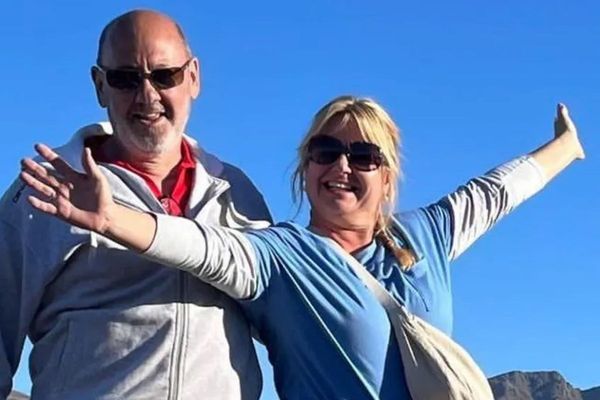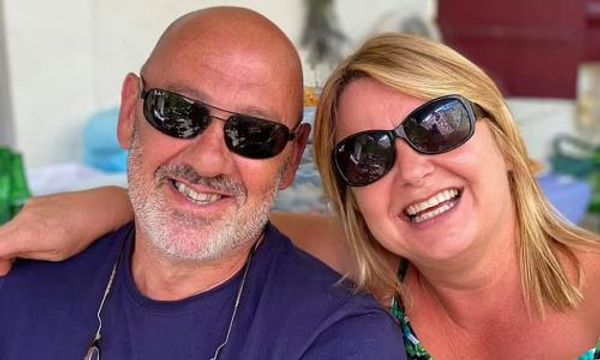She's like anybody else: some days, bright and full of optimism. Others moody, broody and dark. You never know what you're going to get.
I say 'her' because the Whanganui River is famously a legal person. The gender pronoun of choice is debatable - or fluid for sure - but whatever your preference, this is a must-do experience.
We show up early one morning at the canoe company's base in Taumarunui: a thousand questions buzzing in our minds. Would we capsize? How do you actually steer a canoe? How many rapids are there?
Stories abounded, too, of the infamous 50:50 rapid (so-called because 50 per cent of canoeists fall out there and you don't know which of the 50 per cent you'll be). That beast is scheduled for our last day of four. Later, one member of our party spent, she freely admitted, the first three days in a fever of worry about it, such is its reputation.
/cloudfront-ap-southeast-2.images.arcpublishing.com/nzme/5K5S77RXQ7F7E2D2MAYAAZ4FBM.jpg)
After all the packing and schlepping, we eventually arrive at Ohinepane, our launch point. Our band of six slightly apprehensive adventurers have 35km of river ahead of us today. Somehow, with all the mucking about with barrels, admin and safety briefings, we're now running late.
We're told to jump in the canoes and paddle around a rock upstream. My partner and I paddle straight across the river and into the bank. Not an auspicious start. Tragically there's little time to practice because the clock is against us (they can't put us in the river if we're in danger of not arriving at our destination before dark). We just have to go.
Our lack of technique is rewarded 20 minutes later when we're unceremoniously dumped into a raging rapid. It's slightly alarming but we manage to hang on to the canoe and paddles - and a fragment of our dignity.
The other two canoes pause to help us bail water from our craft. We cop another capsize not long after… rinse and repeat.
As the miles pass, the landscape cuts away from cultivated farms and scrubby banks and starts to darken into the rich green flora of native bush. The river is like a magic carpet bearing us along, though with our boat dynamics still not ideal, we're working hard at the paddles. This is a tough day, let's not sugar coat it: 35 clicks is a long way to paddle in one haul for novices, from a standing start, with rapids aplenty.
Admittedly, spending a pleasantly indulgent time the previous evening drinking red wine and eating Indian takeaways at our Taumarunui B&B isn't helping. But on the river you must simply push on. And on.
The river banks are an unfolding narrative… pleated rocks, ancient trees (quite a few of them petrified in the river, waiting to impale passing canoes)… like one of those cartoon backgrounds that unscrolls forever as the animated characters chase each other in the foreground. I love the fact there's only one way to go and even more when a bonus current lifts you and unburdens your aching shoulders with a free ride. But when the river deepens, she slows, often to seemingly nothing.
It's late when we arrive at our first stop: Whakahoro. The DoC hut is 450 metres up a hill and we have to schlep our barrels up there, a gut-busting effort. But we're finally installed in the old schoolhouse for the night. Tired but happy, we eat. And sleep the sleep of river devils.
/cloudfront-ap-southeast-2.images.arcpublishing.com/nzme/3PNGNCLN2MMWVN47BELFMTAMRQ.jpg)
Whakahoro is the last road accessible stop, there's even a cafe here for a coffee come morning. "We're New Zealand's least busy cafe" laughs the owner, and he's not really joking.
The paddling becomes second nature after a while. You get into the zone. The canoe steering becomes easier. Which is fortunate because at 37.5kms, day two is even longer than day one. The river scenery gets even grander now, as we head deep into the Whanganui National Park. Towering buttresses of rock, the most amazing natural walled gardens you'll ever see; ancient stone embedded with shells; rock moulded like putty by the invisible fingers of time.
You can imagine the big old riverboats steaming up here back in the day, bearing Edwardian day-trippers dizzy with the promise of "romantic scenery". It must have been an amazing journey from Whanganui, though with a dark side: the settlers who dynamited rapids, tore down Māori eeling weirs, flogged illicit grog and generally managed to browbeat and alienate the local tribes. Eventually, the riverboats and the luxury lodges of the era all succumbed to a common enemy: fire. (For more on the turbulent history of the river, check out David Young's book Woven By Water).
While it's a long paddle to our next DOC stop - John Coull hut - the barrel lug isn't as far and we're soon lounging on the hut deck with red wine, cheese and crackers, reflecting on the day's paddling. Missy, the DOC ranger, is a wry Californian who likes brevity. "How long have you been at this hut?" I ask. "Oh, you know, a while," she says mysteriously. She perks up later for our "briefing" - "Ask me anything!" she chirrups, although the weather news she dispenses is all rain, rain, rain.
/cloudfront-ap-southeast-2.images.arcpublishing.com/nzme/QG5BAOW7KRFVFUMC6KG2EBBF6U.jpg)
Day three dawns grey and misty. The river, she's getting a mood on. On the upside, it's just 29km today. Child's play for seasoned paddlers like us. The rain closes in, adding atmospherics. The river runs muddy now and swimming breaks are less enticing. All rapids are negotiated successfully. All scenery is spectacular. There's the obligatory stop to walk to that well-known folly, the Bridge to Nowhere. We are happy, if slightly addled, paddlers.
Knowing the next DoC hut is on a marae and alcohol is not allowed, we pitch up for happy hour on the riverbank. Then the sight of other paddlers spurs us on because, to be honest, getting to the huts before the mob means the choice of the best bunks (bottom ones, near any available airflow - it gets pretty ripe in those bunkrooms as any hiker will tell you).
At the Tīeke marae we are hosted by Timbo, a large, friendly bloke who has prepared some kai as a traditional Māori welcome: hot dogs! The campers swarm the food like demented seagulls. Timbo gives a talk about the history of the area. In 1993 it was occupied non-violently when the local iwi and the government had differences over the land. Timbo, who's tangata whenua, seems as surprised as anyone to find himself wearing the DOC logo on his shirt, but it feels like a pretty happy outcome for all concerned.
The final day is a mercifully short 20km scoot down to Pipiriki, our final destination and a place that virtually qualifies as civilisation. This is big rapids day and at the morning "briefing", Timbo stabs an index finger at the map, pointing out the five trickiest rapids, including the dreaded 50:50. He fills us with good advice which we instantly forget.
The rain is now a solid wall of water and the river, between rapids, slug-like. We make good progress until one rapid where a wave comes over the bow and fills our canoe to the brim. We stay afloat, just, and the other two canoes make it through imperiously.
/cloudfront-ap-southeast-2.images.arcpublishing.com/nzme/O4W6UPJRSNG2MSERPR35B6MXBU.jpg)
Only a few kilometres later we realise that was indeed the infamous, much-discussed, 50:50 rapid (it's easy to lose track of where you are on the river) and we laugh the triumphant laugh of those who have canoed and won. Was that all it was?
Maybe this whole rapids lark is like those hoteliers who like to spice up their lodgings with talk of ghosts. The river pros love to juice up the tall stories and watch the fear in the poor paddlers' eyes. Fair enough, it's good sport.
By the time we arrive at Pipiriki, and the welcome sight of the canoe company van, we are fairly rivered out. But "she" is a magnificent creature, a definitive NZ experience and whatever it is you're looking for on that river - tranquillity, brutality, spirituality or just sore shoulders - you will find it. Of that, there is no doubt.
Top tips for taking on the river:
Get canoes with seatbacks, your spine will thank you later
Consider advance handling lessons in a Canadian canoe
Don't overpack and over-provision: it all has to be lugged up hills
Guided or unguided? Guided means more history and finer paddling skills but also lots of stopping as they chat about features, and added cost. We were freedom paddlers - frankly, it's pretty hard to get lost on a river
We did 4 days from Ohinepane but 3 days from Whakahoro is probably a more popular - if softer - choice, leaving no tricky rapids to negotiate until the third day.
For more travel inspiration, go to newzealand.com/nz.
Check traffic light settings and Ministry of Health advice before travel at covid19.govt.nz








